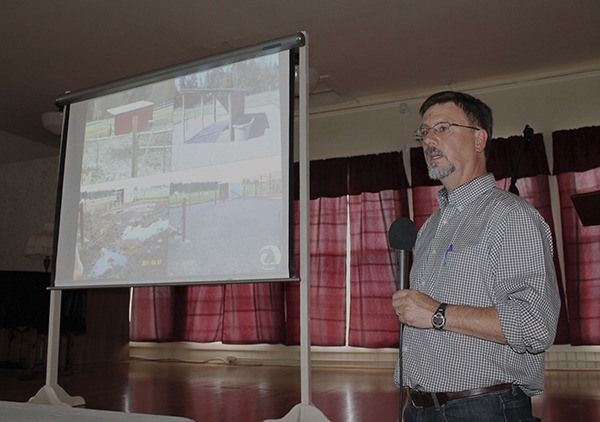Clallam County Planning Commission
What: Public hearing re: Agriculture in Critical Areas update
When: 6:30 p.m. Wednesday, June 15
Where: Clallam County Courthouse, 223 E. Fourth St.
More info: Contact County Senior Planner Greg Ballard at 565-2616 or visit www.clallam.net/LandUse/AGinCA.html.
To better track potential impacts of agricultural activity in or near streams and wetlands, Clallam County officials are turning to an adaptive management approach.
“If you’re already in a wetland, you can continue farming your wetlands,” said Greg Ballard, Clallam County Department of Community Development senior planner. “We’re not trying to get people out of the wetlands — we’re just trying to make sure that all the functions and values of the streams and wetlands aren’t being degraded.”
To help maintain farms while protecting the area’s critical areas county officials have drafted a handful of updates to the Critical Areas Code, including a new definition for existing and ongoing agriculture, edits to the definition of agriculture and a new section outlining required Best Management Practices for existing and ongoing agriculture.
The floated changes are in response to a legal challenge by Protect the Peninsula’s future to the Growth Management Hearing Board after the county adopted its interim Critical Area Code in 1992.
“We’re not trying to eliminate the exemption that was challenged, but we’re trying to put some more performance standards, monitoring provisions and commitment on the county,” said Steve Gray, Clallam County Department of Community Development deputy director and planning manager.
Taking an adaptive management-type approach, Gray and Ballard plan to collaborate with organizations like Streamkeepers and the state Department of Ecology for monitoring and to establish a baseline of the streams and wetlands near existing and ongoing agriculture.
If regular monitoring indicates a reduction in health, county officials would then work to ensure agricultural Best Management Practices are in place and comply with the critical areas code.
“Keep the cows out of the stream and continue farming even in close proximity to these critical areas, but do the right thing and use Best Management Practices,” Gray said. “The key intent is to continue to allow qualified existing agriculture to continue.”
County officials held two workshops in hopes of gathering public input and insight on the changes targeting agriculture that meet the following criteria: has been in agriculture since June 16, 1992; enrolled in the farm and agriculture land open space taxation program; located within the Agriculture Retention Zoning District; has not ceased the agricultural activity for more than five years; the agricultural activity is located within wetlands, streams or associated buffers.
About 40 people attended the workshop on May 24 in Sequim — held partly in preparation for a public hearing before the Clallam County Planning Commission on Wednesday, June 15.
“This workshop is to help us get input,” Ballard said. “This is our first attempt at writing the ordinance and we’re wanting to get feedback from everybody to see if this works or not.”
Although the workshop introduced the proposed changes, it was mainly designed to showcase ways to improve farming methods.
“We’re looking to work with landowners and get them connected as much as possible to resources like the Clallam Conservation District,” Gray said.
Joe Holtrop, Clallam Conservation District executive director, presented at the workshop on a variety of agricultural Best Management Practices and gave local examples. The district is one of 45 Conservation Districts across the state and although it’s a government entity, it’s non-regulatory. Instead, the Clallam Conservation District staff provide incentive and encourage landowners to implement Best Management Practices though programs and services offered, such as community education via workshops and classes, conservation planning and financial assistance.
“We like to help people do farm conservation plans because it’s a way to look at your whole operation holistically and prioritize the resource concerns, your needs, your ability to do things and come up with a good plan to do it,” Holtrop said.
The Clallam Conservation District focuses on implementing “structural” Best Management Practices, like fencing, water collection systems, roof runoff systems and manure storage, versus “managerial” because of oversight associated with managerial practices.
Allowing time for Clallam County to come into compliance the Growth Management Hearing Board has issued the county three 90-day extensions.
Thus, county officials have until July 4 to update the Critical Areas Code to address the Critical Areas Exemption for existing and ongoing agriculture. County prosecuting attorneys and the lawyer for Protect the Peninsula’s Future will have until Oct. 29 when the hearing board would determine whether the new section on existing and ongoing agriculture is compliant with the Growth Management Act.
Reach Alana Linderoth at alinderoth@sequimgazette.com.



